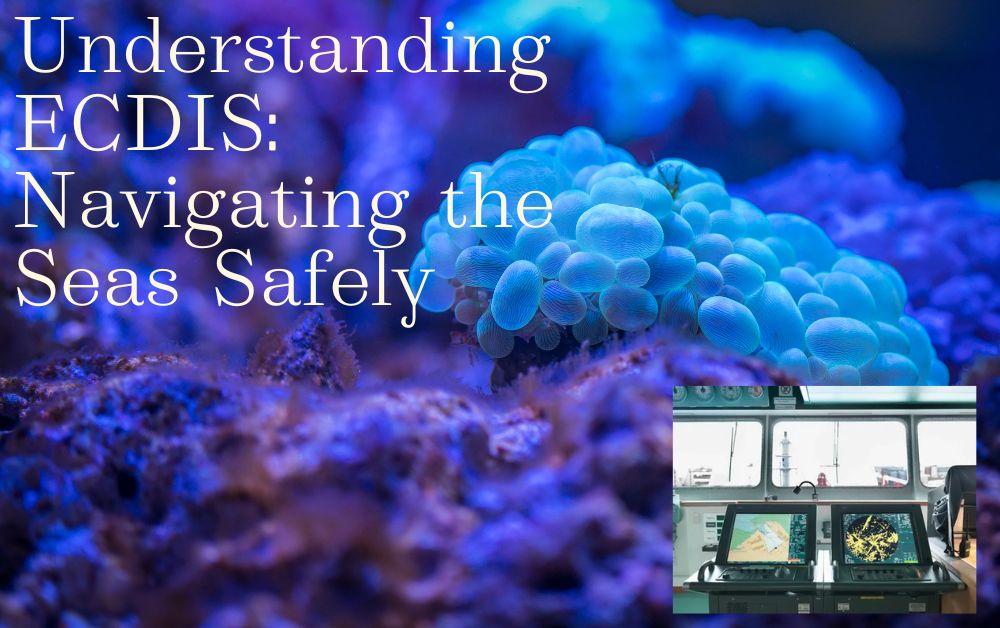Understanding ECDIS: Navigating the Seas Safely

In the vast expanse of the ocean, ships rely on advanced technology to navigate safely through the waves. One such crucial tool is the Electronic Chart Display and Information System (ECDIS). While it may sound complex, understanding ECDIS is essential for anyone involved in maritime operations. In this guide, we’ll delve into what ECDIS is, how it works, its benefits, and why it’s integral to modern maritime navigation.
What is ECDIS?
ECDIS, short for Electronic Chart Display and Information System, is a sophisticated navigation tool used on ships to display electronic navigational charts (ENCs) and additional navigational information. In simpler terms, it’s like a GPS for ships, but with more advanced features tailored for maritime navigation.
How Does ECDIS Work?
At its core, Electronic Chart Display and Information System (ECDIS) operates by amalgamating data from multiple sources to furnish ship crews with thorough navigational insights.
This integration facilitates real-time decision-making for the crew, enabling them to navigate safely and efficiently through various maritime environments. ECDIS’s ability to provide accurate and up-to-date information significantly enhances situational awareness, thereby reducing the likelihood of navigational errors and enhancing overall maritime safety. Furthermore, its intuitive interface simplifies the interpretation of complex data, empowering crews to make informed navigational decisions swiftly. In essence, ECDIS serves as a cornerstone technology in modern maritime operations, fostering safer and more efficient navigation practices across the seas.
Benefits of ECDIS
Implementing ECDIS offers a myriad of benefits for maritime navigation:
- Enhanced Safety: ECDIS helps to improve situational awareness, allowing crews to navigate more safely, especially in challenging conditions or congested waterways.
- Efficiency: By streamlining navigation processes and reducing the reliance on paper charts, ECDIS can improve operational efficiency and reduce the risk of errors.
- Cost Savings: While the initial investment in ECDIS technology may be significant, the long-term cost savings, such as reduced chart maintenance expenses, can outweigh the initial outlay.
- Environmental Benefits: By facilitating more precise navigation, ECDIS can help reduce the risk of accidents such as groundings or collisions, thereby minimizing the potential for environmental damage.
Why ECDIS Matters
In today’s maritime industry, where efficiency and safety are paramount, ECDIS plays a crucial role. Here’s why:
- Regulatory Compliance: Many maritime authorities mandate the use of ECDIS on certain types of vessels, emphasizing its importance in complying with international regulations and ensuring the highest standards of safety.
- Risk Mitigation: By providing accurate and up-to-date navigational information, ECDIS helps mitigate the risks associated with human error, faulty equipment, or adverse weather conditions.
- Navigational Accuracy: Traditional paper charts can be cumbersome to update and may lack real-time data. ECDIS, on the other hand, offers dynamic chart updates and precise positioning, enhancing navigational accuracy.
Challenges and Considerations
While ECDIS offers numerous benefits, its implementation is not without challenges. Some key considerations include:
- Training: Crew members need adequate training to utilize ECDIS effectively. This includes familiarization with the system’s features, understanding data interpretation, and troubleshooting potential issues.
- Data Reliability: ECDIS relies on accurate and up-to-date electronic charts. Ensuring the reliability of this data is essential to prevent navigational errors.
- Redundancy: While ECDIS enhances navigation, it should not be relied upon as the sole means of navigation. Maintaining redundant systems and backup procedures is critical in case of system failures.
Also read :- Navigating the Seas with ECDIS: A Revolutionary Tool for Mariners
The Future of ECDIS
As technology continues to advance, so too will the capabilities of ECDIS. Future developments may include enhanced integration with other onboard systems, improved data visualization techniques, and increased automation to further enhance safety and efficiency.
Conclusion
In conclusion, ECDIS is a vital tool for modern maritime navigation, offering enhanced safety, efficiency, and regulatory compliance. While its implementation may present challenges, the benefits far outweigh the drawbacks. By understanding and embracing ECDIS technology, the maritime industry can navigate the seas with greater precision and confidence, ensuring safe passage for ships and crew alike.
Note :- If you need more ideas about ECDIS, you can find them on this hituponviews.com









